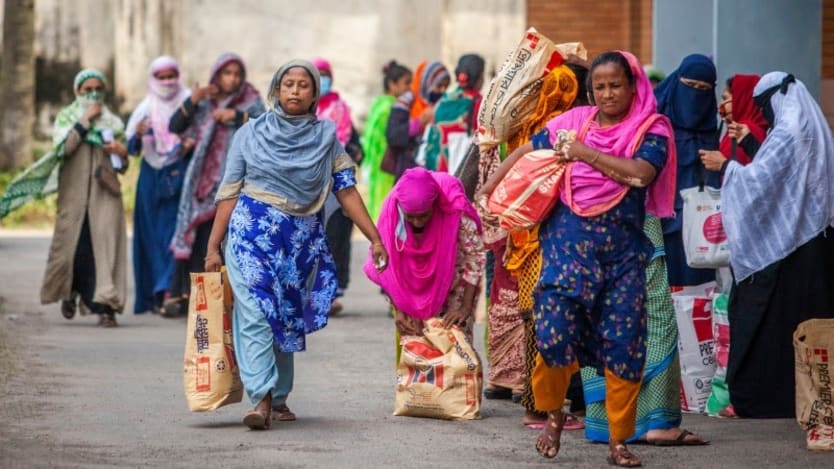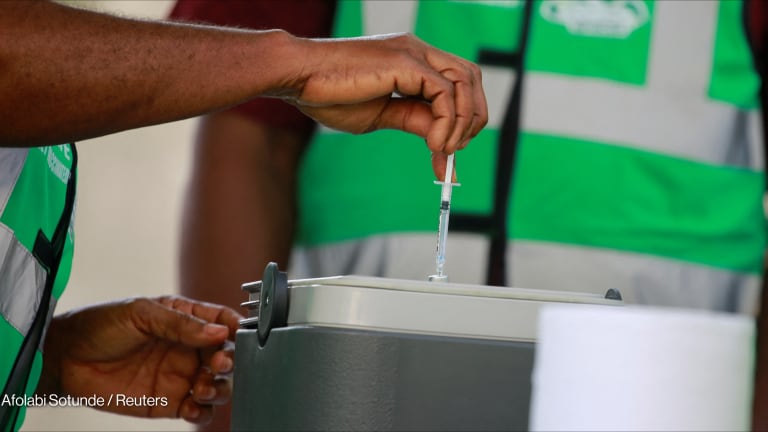
TOKYO — As the COVID-19 pandemic spread, a massive global migration began. While attention focused on vacationers trapped in paradise, or the crowds of expats at airports, millions of Asian migrant workers were also on the move, with little more than their personal belongings. In India, this meant walking, sometimes for days, across the country, while millions of Nepalis, Indonesians, and Filipinos were either stuck abroad with little support in countries with major outbreaks like Singapore, Qatar, and Saudi Arabia, or forced to pay for expensive, dangerous journeys back home.
“Experiences in Malaysia, Singapore, Thailand, and Gulf countries, where many Asian workers reside, have demonstrated that migrant workers are among the [most] vulnerable groups during the COVID-19 pandemic for a variety of reasons,” said Nilim Baruah, regional migration specialist at the International Labour Organization in Asia, citing inadequate housing, lack of social protections, unsafe detention, and lockdowns as key factors.
“Migration has changed, probably permanently, and the question will be in what ways and how can … we ensure that migrant workers and migrants in general are protected.”
— Lara White, Asia-Pacific senior specialist, International Organization for MigrationAdding to this is the growing evidence that many migrant workers have become vectors for COVID-19. In Singapore, outbreaks at crowded dormitories housing mostly South Asian migrant workers have resulted in thousands of cases across the country, including community transmission and a month-long lockdown.
In Indonesia, returning migrant workers traveling home to their villages during Lebaran, or Eid al-Fitr, may have contributed to the spread of the virus across the archipelago. In India and Nepal it is possible that the growing scale and scope of the pandemic is tied to migrant workers returning to their home regions from urban centers.
In Nepal, thousands of returning migrant workers were housed in camps along the border with India.
“These camps for returning migrants are accused of spreading the virus themselves,” said Bruno Deceukelier, Asia coordinator at World Solidarity Movement, based in Nepal. “It [usually] took eight to 10 days before tests came back, and by then a lot of people had moved on, and there was very little contact tracing.”
What the pandemic demonstrates is the ongoing failure of global institutions and national legal systems to provide basic worker protection for Asia’s estimated 56 million migrant workers and millions more internal migrants who’ve crossed state, provincial or national borders and play a key role in the region’s economic development. Experts say that it also provides an opportunity to fix a broken system through better cross-border monitoring, education, and common-sense worker protections.
Amplified insecurity
On the whole, the pandemic, and the resulting shutdowns and socioeconomic impacts, were not themselves the reason migrant workers in Asia suffered so much. Instead, it was a system in which migrant workers are often left at the whims of a system that offers little to no social protections.
“The COVID-19 pandemic has really served as a magnifier of problems that existed,” said Lara White, Asia-Pacific senior specialist at the International Organization for Migration.
Q&A: Climate change and IDPs — adapting to the changing reality of migration
Overall migration data shows the international system works to regulate migration, but events like conflict and climate change are challenging the International Organization for Migration's response to most vulnerable populations.
These problems include worker-borne migration costs, in which workers have to take out loans to travel, which are then taken out of their paychecks often with high interest rates, limited social protections, including health care or pensions, and limited access to legal systems in case of labor violations or abuse by employers.
In many countries, migrant workers work informally, sometimes without proper papers. Their host countries often don’t even know where they are. Indonesia, for example, has an estimated 9 million workers abroad, but during last year’s election, only 2 million were registered to vote, meaning 7 million were unaccounted for.
“Indonesian migrant workers are experiencing greater vulnerability in facing the spread of the COVID-19 pandemic … from exposure to the virus due to being in areas around the COVID-19 epicenters, bearing a stigma as a carrier of the virus leading to restricted mobility, and discrimination in access to services,” said Wahyu Susilo, executive director at Migrant CARE, an Indonesian NGO.
This can be an issue for internal migrant workers too. India’s economic growth of the last decades has been spurred by the migration of millions of workers from poorer regions, mostly in the north and east of the country, to the more prosperous cities in the south and west. Lack of jobs and opportunities at home is the main reason many of them migrate, but once they cross state lines they become immediately vulnerable.
“When workers cross a border, whatever security they have — their ration card, welfare board card — cannot work in other states,” said Chandan Kumar, national coordinator with the Working Peoples' Charter Network in the western city of Pune.
Building a better framework for safe migration
More than six months since COVID-19 first emerged, while efforts are still being made to ensure that migrant workers get adequate social protection, experts believe it is also time to begin working on solutions to ensure that workers’ well-being is protected going forward, and that better systems for safe migration are created.
With millions of migrant workers having returned to their home country, it's unlikely that we’ll see a mass migration outward again. Many of the jobs that these workers had — in sectors such as construction or hospitality — may no longer exist. This brings new concerns that families will fall into poverty traps due to limited economic opportunities in host countries like Nepal or the Philippines.
“Migration has changed, probably permanently, and the question will be in what ways and how can we respond to these new concerns and how can we ensure that migrant workers and migrants in general are protected,” IOM’s White said.
Part of that is pushing for more countries to adopt treaties such as the International Convention on the Protection of the Rights of All Migrant Workers and Members of Their Families. Currently, only 68 countries have joined, with many migrant worker recipient countries in the Middle East and Southeast Asia notably missing, along with India and Nepal.
Individual countries, too, can do more.
“Going forward, there is a need to address structural weaknesses,” ILO’s Baruah said. “Give due attention in policy and law to improving housing and wages of migrant workers, to achieving equal treatment with nationals in social protection; and to recognizing domestic work as work.”
In India, one way to address the problem is to ensure that worker protection laws are extended to migrants from other regions or states, and that state governments get the funding to implement them fully — which Working Peoples' Charter Network sees as key.
For now, according to White and Baruah, IOM and ILO have an additional focus — gathering stories and data to understand and analyze the full social, economic, and personal impacts of the pandemic on migrant workers and using that to inform future policies, including for when the next global crisis hits. With better data, the hope is that in the future, migrant workers won’t be forgotten again.








